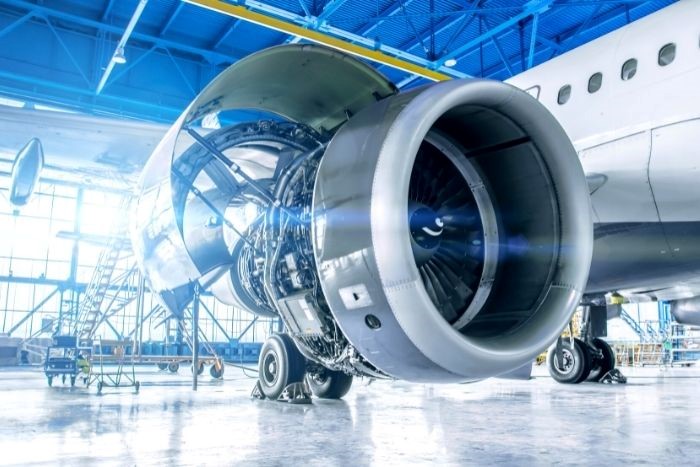As the aerospace industry continually advances, the role of Electromagnetic Interference (EMI) and Electromagnetic Compatibility (EMC) becomes increasingly crucial. The need to ensure safe and reliable operations of aerospace electronics requires comprehensive understanding and mitigation of these phenomena.
Recognizing the importance of EMI/EMC in aerospace has propelled numerous innovations and regulatory guidelines designed to maintain performance integrity and minimize potential disruptions. For exporters and importers working in this sector, understanding these dynamics is key to ensuring the swift movement of essential technologies and equipment.

The Basics of EMI and EMC
Understanding Electromagnetic Interference (EMI)
Electromagnetic Interference (EMI) refers to the disruption of electronic operations due to the presence of unwanted electromagnetic signals. These can be generated by various sources, including natural phenomena and human-made electronic devices.
The Need for Electromagnetic Compatibility (EMC)
EMC ensures that electronic components operate without interference with each other, maintaining their intended function even in environments with high electromagnetic activities.
The Impact of EMI/EMC on Aerospace Electronics
Impact on Aircraft Performance
Issues related to EMI/EMC can significantly affect aircraft systems. They can lead to erroneous data transmission, malfunction of critical systems, and even compromise safety protocols. Therefore, effective measures must be taken to mitigate such risks.
Considerations in Electronic Design
Designers of aerospace electronics must pay careful attention to how components are shielded and isolated to prevent EMI/EMC disruptions. You can find more about these considerations in modern aerospace systems [here](https://blinternationalcompany.com/blog/modern-avionics-in-aerospace/, ‘modern aerospace systems’) internal link.
Mitigation Strategies for EMI/EMC
Design Best Practices
Implementing best practices in design can significantly minimize EMI/EMC. Use of filtering, grounding, and shielding techniques are integral to creating a resistant electronic environment that keeps systems working harmoniously.
Regulatory Standards and Compliance
Adhering to international standards and regulations outlined by key industry bodies ensures compliance and promotes the creation of compatible devices. For those looking to expand globally, understanding compliance needs is crucial.
Importance of Testing and Certification
Preliminary Testing Methods
Using methods like conducted and radiated emission testing, engineers can predict potential EMI/EMC issues and undertake corrective measures before mass production.
Certification for Global Trade
Certification facilitates seamless international trade for exporters and importers by validating the electronic system’s suitability for global markets. Read more on the significance of certification [here](https://www.militaryaerospace.com/commercial-aerospace, ‘commercial aerospace certification’) external link.
Future Trends in EMI/EMC Management
Technological Innovations
The integration of AI and machine learning in managing EMI/EMC can potentially transform how aerospace electronics combat these challenges, enabling smarter systems that self-correct and adapt over time.
Sustainability Efforts
Innovations aim to not only handle EMI/EMC effectively but also to reduce the environmental impact, a growing concern within the industry.
Integration with Aerospace Systems
When Are EMI/EMC Solutions Important?
Understanding when and where solutions are required aids in maintaining optimal performance. Systems integration ensures compatibility across aerospace electronic components.
Key Systems Affected
From navigation to communication and control systems, effective EMI/EMC management is critical in supporting a range of aerospace operations.
Collaboration Across the Industry
Importance of Partnerships
Collaboration between designers, regulators, and manufacturers contributes to improved management of EMI/EMC systems. Leveraging collective expertise can lead to the development of innovative solutions.
Industry-Wide Initiatives
Various initiatives fostered by the aviation industry aim to improve EMI/EMC compliance and understanding. Here is more on initiatives driving electronic systems forward [here](https://blinternationalcompany.com/blog/future-of-pcb-manufacturing/, ‘initiatives in electronics’) internal link.
Conclusion: Why EMI/EMC Matters
In conclusion, understanding the intricacies of EMI/EMC in aerospace electronics is indispensable not only for safety but also for the consistent progress of technological advancements in the sector. Exporters and importers must remain aware of these dynamics to effectively navigate international regulations and standards, propelling the industry forward.

FAQ
What is the main difference between EMI and EMC?
EMI is the interference caused by unwanted electromagnetic energy, while EMC is the ability of electronics to function properly in an electromagnetic environment.
How are EMI and EMC related to aerospace safety?
Managing EMI/EMC ensures that aerospace systems operate without interference, directly impacting safety and reliability of operations.
Why is certification important for global trade?
Certification verifies compliance with international standards, facilitating seamless integration into global markets.


